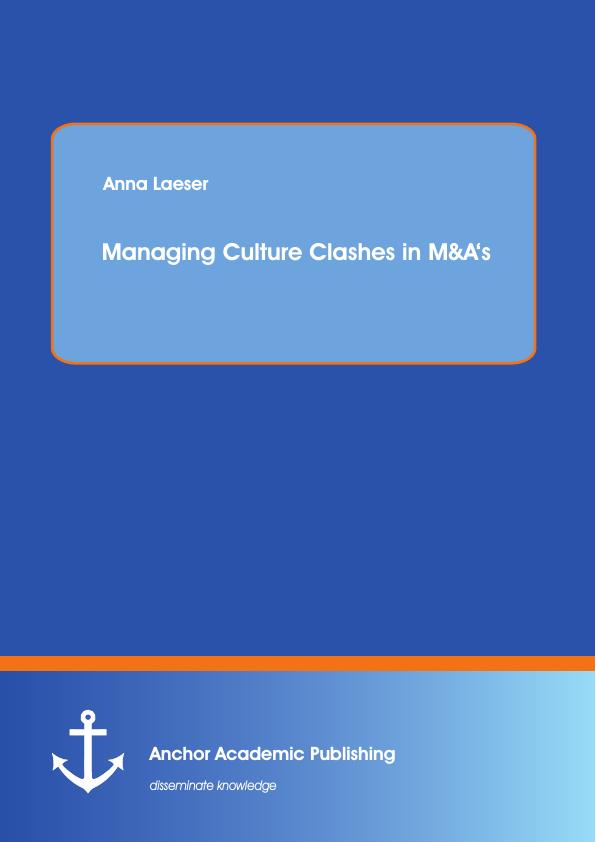
Managing Culture Clashes in M&A‘s
Authors: Anna Laeser
Year: 2013
Publisher: Anchor Publishing
Merger and acquisition activities have become an integral part of today’s businesses world. They are considered as strategic component to gain market share and extend product portfolios. Still, these transactions have a huge impact on an organization. This paper looks specifically at the M&A impact on company culture. Based on an analysis of identified key elements, which drive an M&A process, a cultural integration toolkit will be developed to solve identified cultural problems. Secondary data serves as source data for an inductive approach. Cultural problems and key drivers will be identified based on systematic research. The implantation of these key drivers in existing integration models will be further studied. Findings prove that not all of the identified key drivers are implemented in the models. Therefore, existing models solve the identified cultural problems semi-efficient. This leaves the need for a basic integration tool, which implements all key drivers, serves as guideline through an M&A process and provides specific instruments for realization of single steps. This paper develops such a basic integration toolkit in chapter 5. The toolkit meets all these requirements and proves that “managing culture clashes in M&A’s” is possible.
Table of Contents
List of Abbreviations
List of Figures
Management Summary
1 Introduction
1.1 Overview of the M&A Market and Activity
1.2 Problem Statement
1.3 Research Method
1.4 Structure
2Definitions
2.1 Transactions and Due Diligence
2.2 Culture and Culture Clashes
2.3 Trust and Language
3 Impact of M&A’s
3.1 In General
3.2 During the M&A Stages
3.3 Cultural Problems and Key Drivers in M&A Stages
4Integration Models as Solution Alternatives
4.1 Analysis Approach
4.2 Selection of Existing Integration Models
4.2.1 The Delta Model by Faber
4.2.2 The Three Phase Model by Wollersheim
4.2.3 The Three Phase Model by Schneck
4.2.4 The Three Phase Model by Schuler
4.2.5 The Organizational Fit by Cartwright
4.2.6 The Customized CDD Model by Carleton
4.2.7 The Three Phase Framework by Trompenaars
4.2.8 Various Supplemental Models and Studies
4.3 Evaluation of the Models
5 A Set of Cultural Integration Tools
6Conclusion
6.1 Summary and Conclusion
6.2 Outlook and Recommendations
Appendices
References
Other Bibliography
